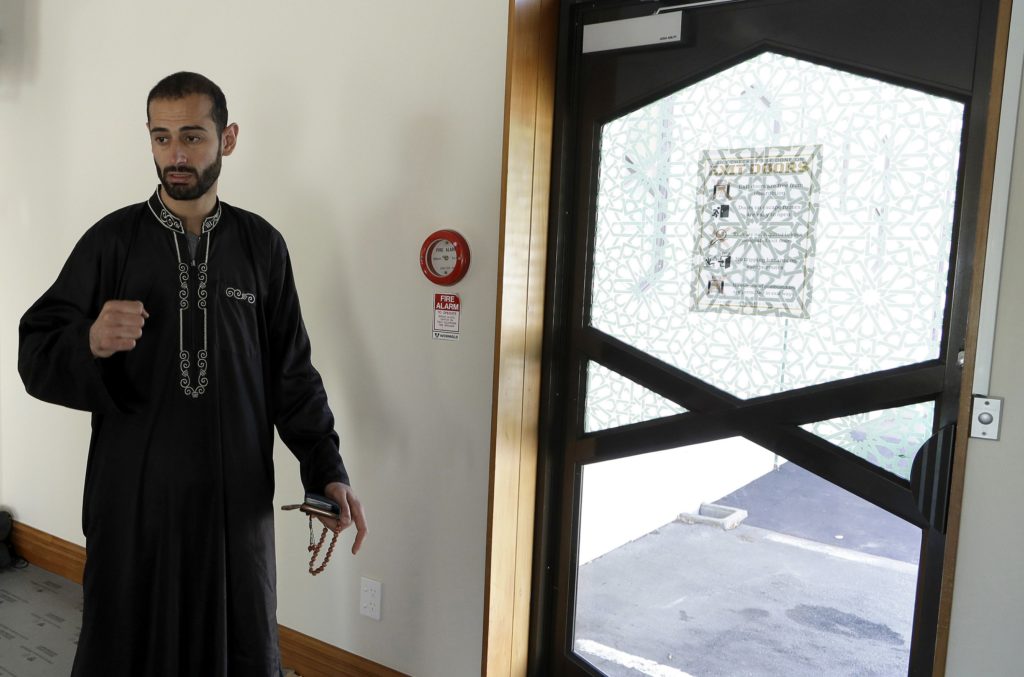By now you have likely read about the tragic shootings that occurred in two mosques in Christchurch, New Zealand on March 15th. A few days ago, an AP article discussed an electronic locking system at an egress door serving a main prayer room in one of the mosques. The article stated that the door would normally have been open during prayer services, but that people who were trying to escape the gunman could not open the door.
Maybe sometimes my preaching about code compliance and life safety gets old; you probably already know about the egress requirements. But there are many people who do not know, and it’s our job to help them understand what is required and why.
Just this morning, a fire marshal emailed me to say that he had inspected a church recently, and found that on the exterior doors the vertical rods had been removed from the panic hardware. Surface bolts had been installed top and bottom to secure the doors. We have all seen modifications like this – maybe we’ve seen them so often that we just shake our heads and keep walking. Luckily, this fire marshal did not.
I don’t know what type of electrified hardware had been installed on the mosque door, but it appears that an auxiliary push button next to the door was intended to unlock the door for egress. It’s a common mistake to assume that installing a push button next to the door is code-compliant. I’m not familiar with the codes in New Zealand, but the US model codes would not allow a button to be the only release device.
In the US, the auxiliary button is used in addition to a sensor on the egress side of the door that unlocks the door when it detects a building occupant approaching. This type of system is often used on doors with electromagnetic locks, and the lock is also required to release upon actuation of the fire alarm and upon power failure. With an occupant load of more than 50 people, the International Building Code would require panic hardware on the mosque door.
The situation described in the AP article also highlights the problems associated with the practice of locking doors when the building is not occupied, and relying on human intervention to unlock doors when the building is occupied. Whether it’s a retrofit security device or electronic locking system that does not allow egress “after hours,” there is a high risk of the door being kept locked when the building is occupied – either because someone forgot to remove the device/unlock the door, or because security was prioritized over life safety.
Fifty people died in the shootings at the two mosques in Christchurch. How many could have survived if the egress door had allowed immediate evacuation? We may never know the answer to that question, but we CAN and MUST continue to share information about free egress. Lives may depend on it.
Here is a short video from the AP article:
You need to login or register to bookmark/favorite this content.







Lori,
you wrote that US standards require that the auxiliary button is used in addition to a sensor on the egress side of the door that unlocks the door when it detects a building occupant approaching.
I live in Europe. I agree that having a sensor on the egress side of the door is more and more safe, but I am not sure that the European standards would require it as well.
Do you have any knowledge of the European standards, or, can anyone here give advice?
EN 13637 (Electrically controlled exit systems for use on escape routes) at 4.1.2.1 seems to allow only the auxiliary push button next to the door to unlock the door for egress:
“The manufacturer of an electrically controlled exit system may be combined with technically independent components… Technically independent components means: exit devices without any electrical and/or mechanical interaction on the safety functions of the exit system…”
Hi Paolo –
I don’t work with the European standards, but there must be someone from Allegion who does. We need iDigHardware sites in every country! 🙂
Hey – I’m coming to Italy this summer! I can’t wait to see all of the beautiful doors!
– Lori